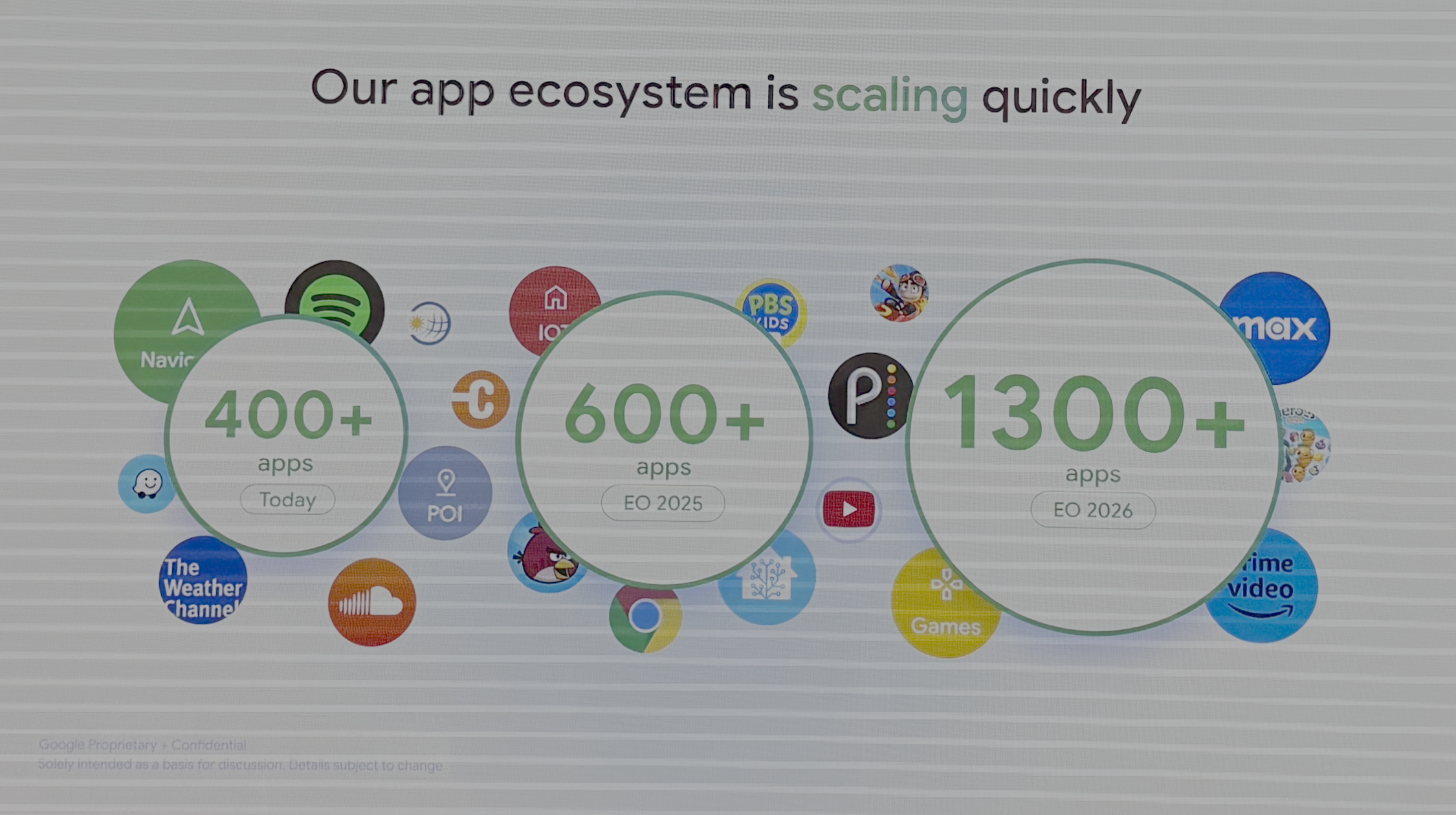
The Future of Android Automotive OS
Android Automotive OS is the infotainment operating system that transforms cars into a comprehensive digital experience. With a growing app ecosystem, deep Google integrations, and a clear focus on user experience, it's setting new standards – and this is just the beginning.
As Steve Basar from Google emphasized in a panel discussion: "There are countless use cases where cloud and AI can create unimaginable benefits for users – this is just the beginning."
Mithil Munshi, responsible for Android Automotive Partnerships at Google, also provided exciting insights into current figures and future development at IAA.
Benefits for OEMs
Android Automotive OS brings benefits not only for end users but also for OEMs:
- Google Play Power: Over 2.5 billion users monthly, 3 million developers in the community, and 140 billion downloads last year.
- Easy Maintenance: App updates run automatically in the background when the vehicle is not in use. Core services can be updated without complex OTA updates.
- Quality & Security: Every app is automatically and manually checked for automotive compliance.
- Car + Phone Experience: AAOS doesn't exclude Apple users – CarPlay remains usable. At the same time, native apps (e.g., Spotify, Google Maps) benefit from smooth performance and additional features.
This way, Google brings OEMs and third-party developers together with the Automotive Developer Platform and takes care of maintenance, updates, and ecosystem expansion.
Current Status
Currently, around 10 million vehicles are equipped with Google Automotive Services (GAS). Additionally, there are significantly more non-GAS implementations. In total, over 100 million vehicles worldwide are already running Android Automotive OS.
Nevertheless, there are challenges:
- Many OEMs don't implement AAOS themselves but through integrators – often the software architecture remains a puzzle that creates performance problems.
- Many systems are based on outdated Android versions since OEMs rarely deploy updates.
- This results in limitations in security, performance, and app functionality.
So there's still much work to be done to unlock the full potential.
Future Development
The direction is clear: Almost all major OEMs – from Volkswagen Group to Mercedes and Renault to BMW – are openly discussing partnerships with Google.
According to Gartner, by 2028, over 70% of all newly produced cars worldwide should be equipped with AAOS.
The app landscape is also growing rapidly:
- Early 2024: <200 apps in Google Play Store for Automotive
- Today: >400 apps
- Goal end of 2025: >600 apps
- Goal end of 2026: >1300 apps
An app boom comparable to the smartphone revolution.

Conclusion
Android Automotive OS has enormous potential – similar to app stores in the smartphone era. Billions of people use Google Play today, millions of new business cases have emerged. The same is happening now in cars.
We at Aximote have published our own app for driving style and vehicle analysis in the Google Play Store since April and are excited to help shape the future of the growing app ecosystem in cars. 🚀
🔗
Privacy Implications of Data Collection in Android Automotive OS
Gartner Identifies Top Five Automotive Technology Trends for 2022
Image source: Own recordings during the Google presentation at IAA 2025.